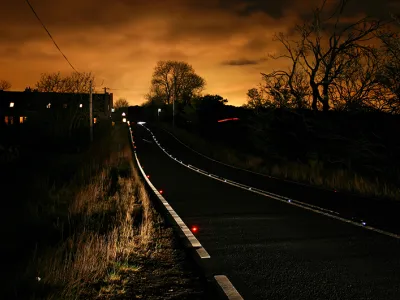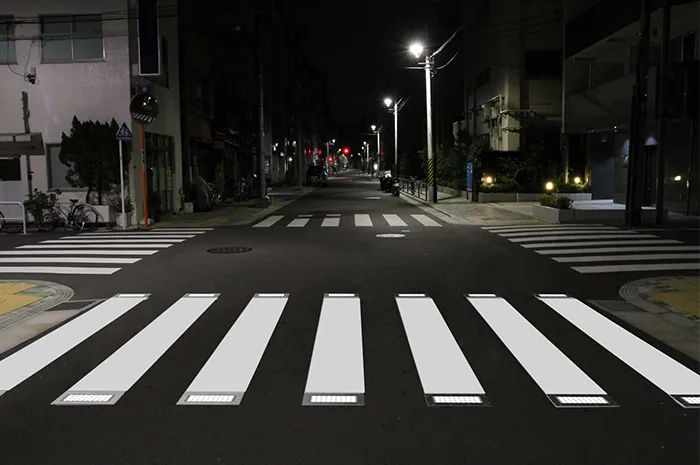
New ultra-bright white LEDs deliver 150% greater brightness than before, according to the company. An advanced circuit design enables more efficient power management and the latest retroreflective surface means the studs perform brilliantly even without the LED on.
As passive road studs rely on the car's headlights, this allows drivers to see up to 90m ahead in the dark, while active road studs, with their LEDs, allow drivers to see 900m ahead.
As well as allowing a driver to see further, active road studs work in all weather conditions. In contrast, a passive road stud can’t reflect light if it is underwater and is less effective in the fog. This reduces their effectiveness during much of the winter weather in the UK.
The SolarLite 2 provides up to 900m of visibility of the road ahead, using superior solar powered high intensity LEDs. The superior distance visibility allows drivers additional reaction time to respond to road layouts ahead. At a vehicle speed of 100km/h, this can increase a driver’s reaction time from 3.2 seconds to over 30 seconds, explained Nick Lanigan, managing director of Clearview Intelligence.
Clearview Intelligence, based in Oxfordshire County in England, developed SolarLite 2 in partnership with two other British businesses - Zeta Specialist Lighting and AEV - as part of an initiative to relocate manufacturing from overseas to Britain. Previous SolarLites were made in Asia.
SolarLite 2 will be available in Spring 2018 in a full range of colour options for all road and path delineation uses, including white, amber, red, blue and green.









